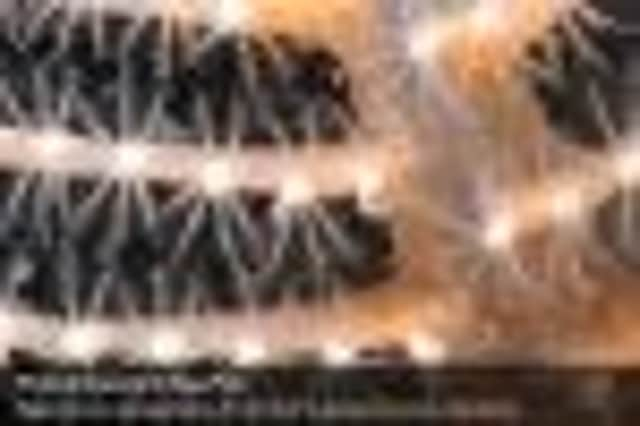Monster mussels and faceless fish – the weird world of subsea Scotland


Amphioxus, a prehistoric “faceless and brainless” fish which is one of Scotland’s most elusive residents, has been spotted in the waters off Tankerness in Orkney.
Along with other unusual creatures, including giant mussels and brightly coloured molluscs, the rare fish has been uncovered during a series of 15 marine surveys during 2011 which have furthered our knowledge of the biodiversity of Scotland’s seas.
Advertisement
Hide AdAdvertisement
Hide AdThe surveys, which covered more than 2,000 square miles, used acoustic multi-beam scanners to create 3D images of the seabed.
As a result, the first marine maps of many new areas have been produced, including waters around Rockall, to the west of the Western Isles, around the island of Canna and within Sinclair Bay in Caithness.
Environment secretary Richard Lochhead said the discoveries have ranged from the weird to the wonderful: “In an age where the lands of the world have been mapped out and recorded, it’s amazing how many discoveries are waiting to be found under the waves.
“The waters around Scotland are rich in such fascinating biodiversity, and it’s our responsibility to protect this fragile environment. That’s why we have ramped up our marine survey work, with plans being prepared for new surveys in 2012”
Susan Davies, director of policy and advice for Scottish Natural Heritage, said the nation’s seas were a fantastic asset and the survey findings would help manage them sustainably.
Dr Dan Barlow, WWF Scotland’s head of policy, added: “These surveys highlight that Scotland’s seas and coasts are home to a truly amazing range of weird and wonderful wildlife.
“By providing vital information on what lies beneath the waves, these surveys will help inform decisions on better ways to protect this important resource.
“From helping inform the appropriate deployment of marine renewables to supporting the roll-out of a network of Marine Protected Areas, these survey findings will prove invaluable in helping ensure the recovery of Scotland’s seas.
Advertisement
Hide AdAdvertisement
Hide Ad“It is important that the government builds on this work to further our knowledge of the marine environment.”
Findings in the survey:
AMPHIOXUS
This elusive species is regarded as a modern representative of the first animals that evolved a backbone. With a nerve cord down its back, it has no specific brain or face.
It grows to about 5cm long and has a translucent, fish-like body, but without any paired fins or other limbs.
While Amphioxus does have some cartilage-like material around the gill slits, mouth and tail, is has no true skeleton.
They are usually found buried in sand in shallow parts of temperate or tropical seas. In Asia, they are harvested commercially as food for humans and domesticated animals.
FAN MUSSELS
At up to 48cm long, this is Scotland’s largest sea shell. More than 100 were discovered around the Small Isles, the largest aggregation in UK waters.
With golden threads likened to human hair so fine they can attach to a single grain of sand, seamen once believed it fed on drowned sailors.
The shell is made of brown, horny material, which becomes rather flaky when dry, revealing beautiful mother-of-pearl beneath. The strong, golden threads it makes to attach its shells to the seabed have been used to decorate costumes for kings.
HORSE MUSSEL BED
Advertisement
Hide AdAdvertisement
Hide AdThe largest horse mussel bed in Scotland was found near Noss Head, Caithness. The mussel stabilises mobile seabeds and provides a critical ecosystem for other species. Known as Clabbydhhu in Gaelic (enormous black mouth), it can live to nearly 50.
It can live singly, or in small clumps, and can form extensive beds and reefs, especially in sheltered sites with tidal streams, as in the narrows of sea lochs and the sounds between islands.
Young mussels are a favourite meal for crabs and starfish, but once they grow to more than 6cm long, they are relatively safe from these predators.
NORTHERN FEATHER STAR
Revealed off the Sound of Canna, this is a brightly coloured species with ten feather-like arms fanning out from a central disc.
It is a graceful and curious echinoderm (from the Greek for spiny-skinned) and is part of the class of crinoids (meaning “like a lily”). It has ten long, slender arms that can be a variety of beautiful colours arms and which grow to 15cm long and are arranged around a central disc. The northern feather star puts on a fascinating display when it exhibits its ability to “swim” short distances, which it does by flicking its arms up and down.
FLAME SHELL BEDS
Found in Loch Linnhe, Argyll, this bivalve mollusc with bright orange feeding tentacles is only found in a few West Coast locations. It is about 4cm long, and also known as file shells.
It lives completely hidden on the seabed inside nests, which it build from shells, stones and other materials around them. Hundreds of these nests can combine to form a dense bed, raising and stabilising the seabed and making it more attractive for lots of other creatures.